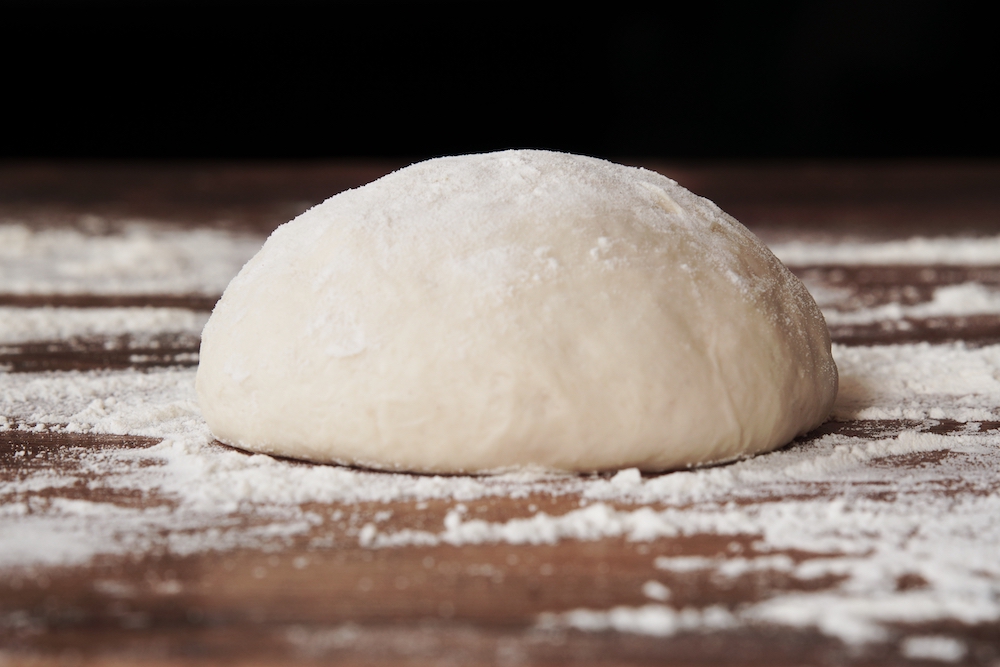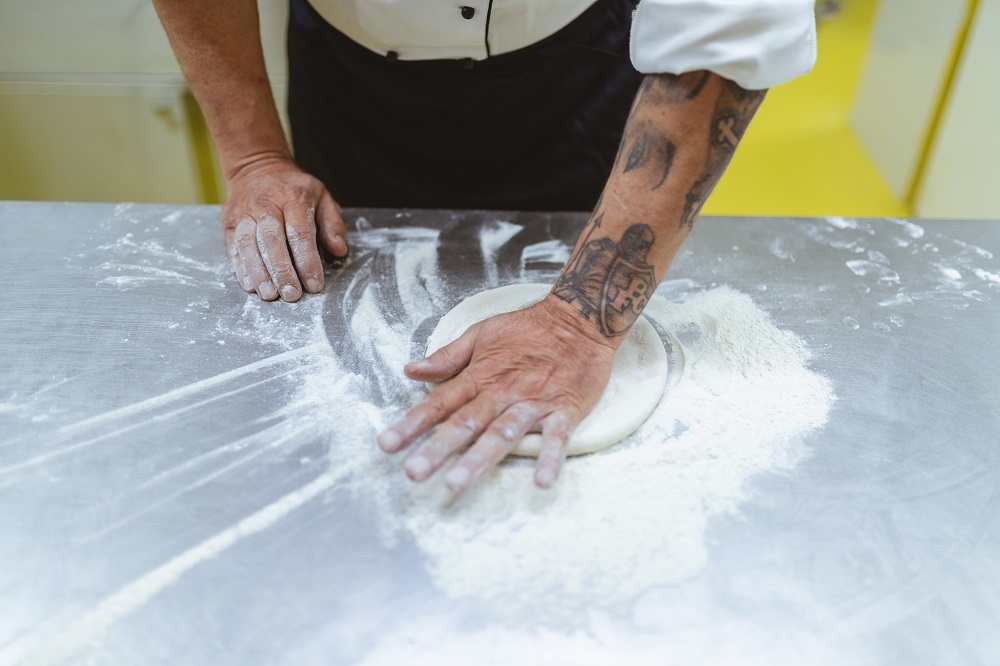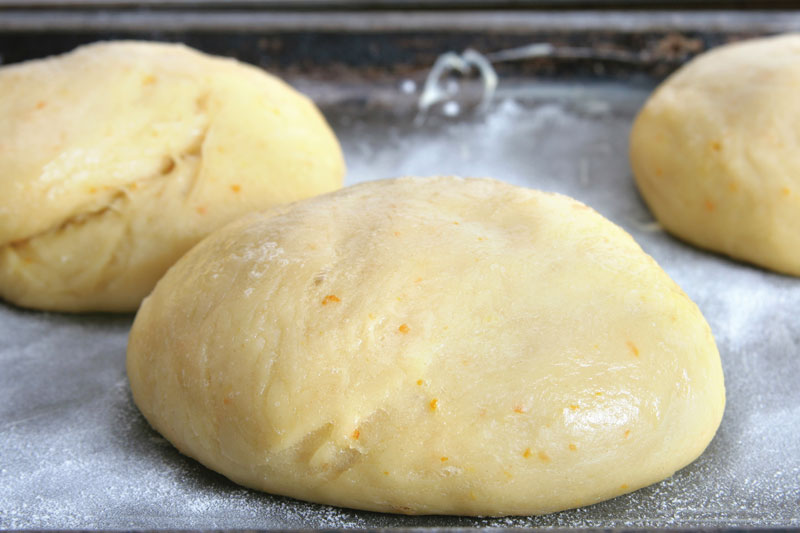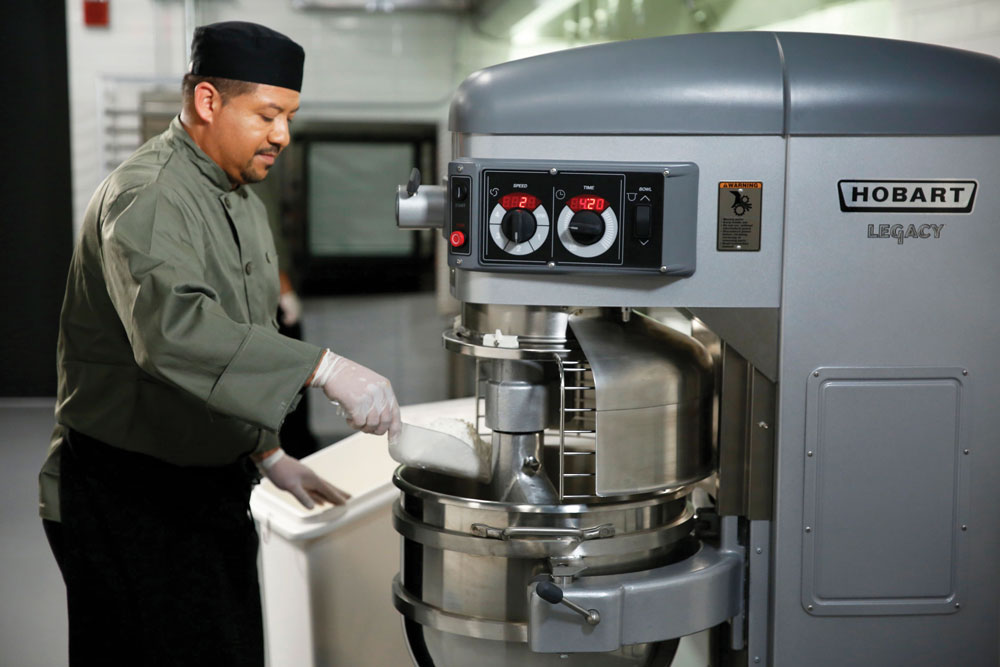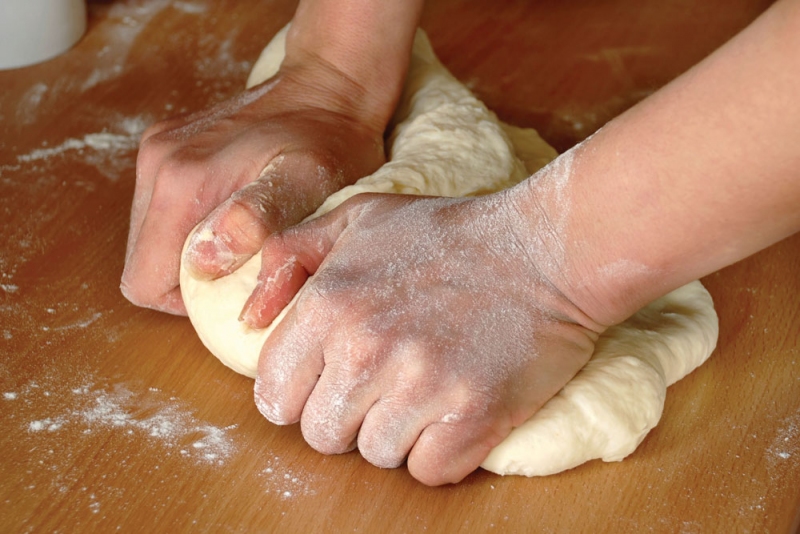Question:
We're plagued with the presence of a gel or gum line just beneath the sauce on many of our pizzas. The problem seems to be worse on weekends and during busy, high production periods. What's causing this problem, and how can we correct it? Also, our pizza seems to loose its crispiness very soon after coming out of the oven. Are these two problems related, or are they separate problems?
Answer:
We've studied the gum line problem extensively, at AIB, and we have found the problem to be common only to certain circumstances. Once you've identified the cause, the corrective action is pretty straightforward. Below, I've identified the various causes and the suggested corrective action.
- If you are in the habit of pre-saucing your pizza skins in preparation for the rush periods. This can allow time for your sauce to separate with the water migrating into the dough. Once in the dough, and covered with sauce and cheese, it is impossible to bake this water soaked portion of the dough to the consistency of anything but wet pasta. If you insist upon the need to pre-sauce your skins, we have found that the application of a light coating of oil to the surface of the dough goes a long way towards slowing this problem down, but given sufficient time, the water will still manage to soak into the dough, so if you go this route, try to limit the time that the dough is allowed to stand between saucing and baking.
- Another causative factor is excessive thinning of the sauce. I can't tell you how much or how little water to add to a sauce to thin it down for use, as this will depend greatly upon the type and solids content of the tomato products used in making your sauce. A good indicator that you might have too much water in your sauce is the constant need to stir the sauce during use. Think about it. If the sauce begins to separate in the bowl as you are using it, what will it do on the pizza? A good test to determine if this might be the cause of the gum/gel line is to apply only tomato sauce to the pizza, right out of the can. Then apply the normal amount of cheese, and other toppings and bake the pizza in the normal manner. If no gum/gel line developed, separation of your sauce should be highly suspect. If the gum/gel line is still present, in all its glory, you will need to look elsewhere for the solution.
- A common problem that crops up from time to time is that of "fast baking". When pizzas are fast baked at high temperatures, the crust might turn a golden brown in color, and the cheese might be lightly browned too, but the inside of the dough has not been in the oven long enough to allow it to be fully or thoroughly baked. This was a very common problem when the new, more efficient, conveyor ovens first came out. They were being heavily promoted on the basis that they could dramatically reduce the baking time of a pizza. Well, if you consider a pizza to be fully baked when its brown on the outside, then they lived up to their claims. For the most part, we found that these new, efficient ovens could brown the crusts faster than anything we had previously seen, but within the baking times being promoted (that being long enough to make the crust brown) the interior of the crust was still only partially baked, and certainly didn't achieve the amount of bake necessary to ensure a crispy crust with holding power at the customer's table or on a serving line. To se if this might be the source of your problem, reduce the baking temperature by 50°F, and lengthen the baking time by one to two minutes. This may not fully correct the problem, but if you see an improvement, it would be an indication that you're on the right track, and a few more "tweaks" to the baking parameters might be in order.
- Lastly, we have occasionally seen dough formulas that were out of balance in reference to sugar content. In short, the sugar level was too high. So how did this happen? The most common scenario is where a new oven is purchased. In order for the dough to color up to the desired level in the old oven, the sugar content had to be increased slightly. Old and failing electric deck ovens can lead you down this path if you are not careful, then when you replace that old oven with a new, highly efficient, state of the art baking machine, you adjust the baking parameters to give you a crust with all of the same outward appearances of the crusts made in the old oven. This was probably not the right thing to do. I bet you were impressed by the faster bake time, and uniform crust color, but you lost something called crispiness in the trade. If your sugar levels are at, or above 2 percent of the flour weight, first try cutting the amount of sugar added to the dough in half, or you might even reduce the sugar level to just 1 percent of the weight of the flour. This will reduce the rate at which the dough browns during baking, allowing you to simply bake the crust a bit longer, resulting in a better, more thorough bake, and a crispier crust characteristic.



